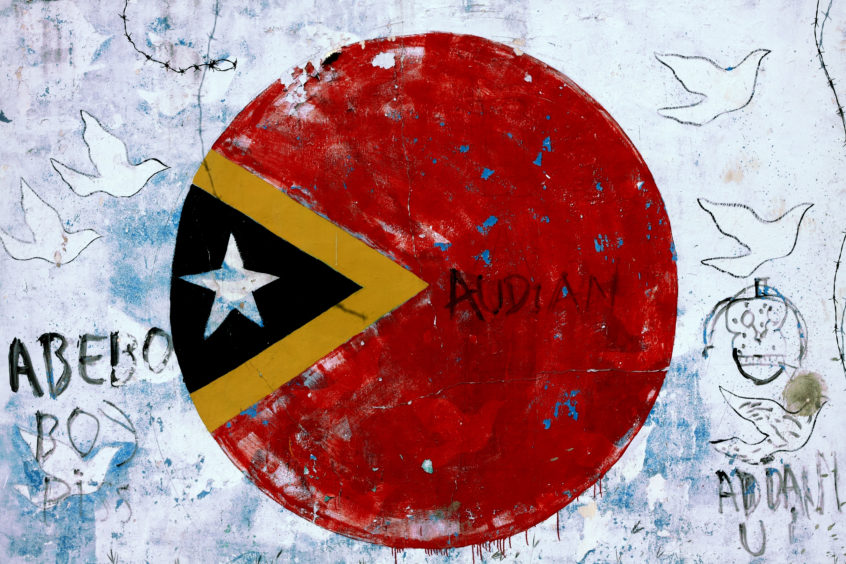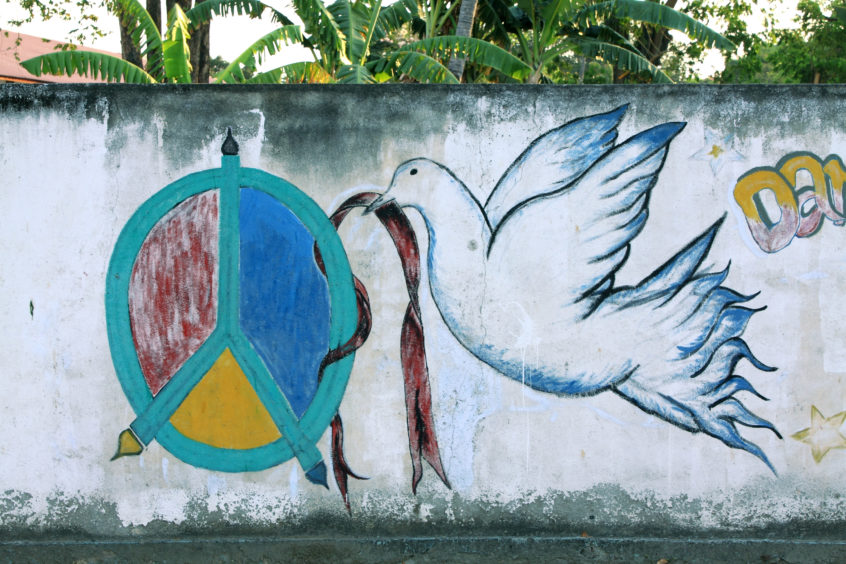
Fast-moving plans for a Santos-led carbon capture and storage (CCS) project at the Bayu Undan field offshore East Timor, that would see the nation import Australia’s waste, have been described as “carbon colonialism” by independent thinktank La’o Hamutuk.
Charles Scheiner, an analyst at the Timorese NGO, warned that Santos (ASX:STO), Eni (BIT:ENI), as well as Australia, are hoping to exploit an impoverished neighbour, by implementing the proposed CCS scheme, targeted to start-up in 2025. If successful, it would be one of the biggest carbon storage sites globally.
“I think most people would not want Timor Leste to import Australia’s waste and would be appalled at being used to justify further destruction of the climate,” said Scheiner, speaking on Tuesday during a webinar about CCS organised by the Environment Centre NT. East Timor is also known as Timor Leste.
In the push for a ‘net zero’ world, carbon capture is a critical piece of the jigsaw. Numerous CCS projects are now moving forwards around the world, aimed at significantly reducing the carbon emissions of oil and gas assets to ensure future project competitiveness as stakeholders increasingly demand more action on emissions, reported energy research company Wood Mackenzie. Indeed, Santos hopes CCS will make its Barossa gas development offshore Australia more palatable as the energy transition accelerates.
Kevin Gallagher, chief executive of Santos, told an industry conference in Darwin last month, that the CCS project at Bayu Undan has the potential to provide a carbon solution by 2025 that will help to unlock more gas resources, that have high carbon dioxide (CO2) content, in the region, including its Barossa and Caldita fields, as well as Eni’s Evans Shoal field.
The lower CO2 content gas reservoirs off northern Australia have been consumed and are nearly empty, such as Bayu Undan, which has 6% CO2 in its gas, compared with 18% at Barossa and 27% at Evans Shoal.
Santos and Eni hope to store 10 million tons per year of carbon dioxide (CO2) in the Bayu-Undan field once it is depleted, equivalent to 1/39th of Australia’s 2018 emissions. “From a Timorese perspective, this is 16 times as much carbon as the entire country emitted that year,” noted Scheiner.
“In addition to helping the companies and Australia claim ‘net zero’ while exploiting Barossa and Evans Shoal, this will enable them to delay the costs of decommissioning Bayu-Undan and restoring it to a safe, stable condition. Even if they don’t get an Australian government subsidy for this CCS project in Timor-Leste, they will have the advantage of much looser environmental and operational regulations, out of sight of the Australian government and people,” said Scheiner.
Unfortunately, the Timorese government has become addicted to easy rents from the petroleum industry and the country’s regulator ANPM has been quick to start collaborating with Santos. In September, the pair signed a memorandum of understanding covering the Bayu Undan CCS project.
“The proposed CCS project will inspire more fantastic dreams of manna from heaven,” cautioned Scheiner.
Crucially, there has never been any public discussion about how much Santos will pay to store CO2 in East Timor from its Barossa development. It is also unclear how long Santos will be responsible for the CO2 planned to be buried at Bayu Undan or what happens further down the road. Worryingly, it seems East Timor will get Santos’ waste as well as the responsibility to keep it out of the atmosphere forever.
Woefully ill-equipped
But as Scheiner highlighted, the people of East Timor are woefully ill-equipped to assess the implications of agreeing to the proposed CCS project. “The Timorese people – including key decision makers – have limited technical, environmental, and numerical skills and experience.”
A spokesperson for IN-VR, which helps East Timor’s government market its petroleum sector, told Energy Voice that “ANPM is exploring the potential to stockpile carbon-credits and offer them to companies investing in offshore and onshore projects (in East Timor), helping exploration and production companies make their projects carbon neutral, and finance them more easily. ANPM and the Ministry of Petroleum and Mines are currently exploring how to develop this scheme and implement it under their commercial and fiscal package.”
However, it seems naïve for East Timor to rush into a CCS project designed to store Australia’s waste as the Timorese have much less to gain from the proposal versus the oil companies. Indeed, East Timor has a history of making poor strategic decisions in relation to its petroleum industry. In 2019, the country’s leaders authorised spending $650 million to buy ConocoPhillips and Shell’s share of the Greater Sunrise field, now a stranded asset. National oil company TimorGAP, which borrowed the money from the country’s petroleum fund, has written down the value of its stake to zero as of late 2020.
Still, in principle, La’o Hamutuk said it is not opposed to CCS once the technology is developed and proven to work. But “it should not be used to green wash or justify additional emissions for oil company profits,” said Scheiner.
Fraught with risks
Indeed, what Santos is proposing is fraught with risks.
“CCS adds costs, delays, risks, and uncertainties to any development – as Chevron have found to their cost at the Gorgon LNG and CCS project at Barrow Island, Western Australia,” John Robert, a chemical engineer and guest contributor at the Institute for Energy Economics and Financial Analysis (IEEFA), told the webinar.
Industry heavyweight Chevron, and its joint venture partners, Shell, and ExxonMobil, have struggled to get CCS working at the Gorgon project onshore Barrow Island. Even with the world’s best petroleum engineers, the biggest and best global oil companies, as well as some of Australia’s best-known geology, the CCS development has failed terribly so far, Jason Fowler, an energy campaigner at the Environment Centre NT told the webinar.
Chevron, which operates the Gorgon development, has not met the official requirement to capture and store at least 80% of the emissions generated over the first five years of the project, or around 4 million tonnes per year, as the $3 billion CCS development has been beset with technical problems.
Why CCS?
New gas developments in Australia, such as the Santos-led Barossa, are being pursued to continue producing liquefied natural gas (LNG) for export. But all LNG producers are coming under increasing pressure from their customers and shareholders to supply gas that has a low CO2 intensity. This explains why Santos is aggressively pursuing CCS at Bayu Undan as its customers and partners in Japan and South Korea demand cleaner gas.
Still, only a minor portion of the total emissions will be captured and stored, most likely making LNG from Barossa the dirtiest made in Australia or globally, Robert argued in a recent paper for IEEFA. Electrification of an LNG project is much less risky and more effective than CCS, said Robert.
“CCS alone is no silver bullet for the LNG industry and carbon capture is only part of the solution. A range of other technologies, including renewables, electrification and batteries, will also be required to effectively decarbonise LNG projects,” noted Wood Mackenzie.
Santos currently operates the nearly depleted Bayu Undan field in East Timor on behalf of partners Eni, Japan’s Inpex (TYO:1605) and South Korea’s SK E&S.
SK E&S is also a partner in Barossa in Australian waters.

